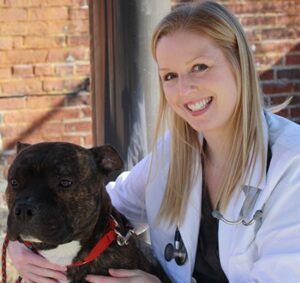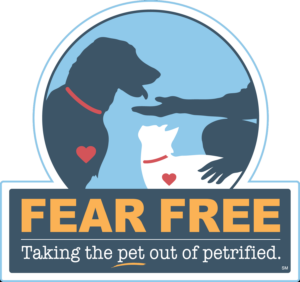-
Adopt
-
Veterinary Care
Services
Client Information
- What to Expect – Angell Boston
- Client Rights and Responsibilities
- Payments / Financial Assistance
- Pharmacy
- Client Policies
- Our Doctors
- Grief Support / Counseling
- Directions and Parking
- Helpful “How-to” Pet Care
Online Payments
Referrals
- Referral Forms/Contact
- Direct Connect
- Referring Veterinarian Portal
- Clinical Articles
- Partners in Care Newsletter
CE, Internships & Alumni Info
CE Seminar Schedule
Emergency: Boston
Emergency: Waltham
Poison Control Hotline
-
Programs & Resources
- Careers
-
Donate Now

angell.org/emergency
emergency@angell.org
781-902-8400
MSPCA-Angell West, Waltham
Fear Free is the concept of practicing veterinary medicine that involves the reduction of feelings of stress in our patients which in return will result in a better experience for all involved — including pets, owners, and the veterinary team. Fear Free was created by “America’s Veterinarian” Dr. Marty Becker who has devoted his life to the health of pets and those who love them. He has written numerous books, serves on advisory boards for humane organizations and is an adjunct professor at multiple veterinary colleges. The Fear Free concept is based on recognizing and taking steps to reduce fear, anxiety, and stress (from now on referred to as FAS in this article) associated with visits to the veterinary hospital and requires good communication between the owner and veterinary team.
In order to reduce FAS, we first must understand how our canine and feline patients communicate signs of FAS to us. Common signs of FAS in a dog are: a tense face, lips drawn back, tail down, body lowered, dilated pupils, snarling or growling. Common signs of FAS in a cat are tucked tail, crouched posture, hissing, pupils dilated, and ears pinned down to the side. The first step in addressing FAS is a discussion with the owner regarding any concerns they have about coming into the veterinary hospital or known stressors for the pet. A stressor can be any experience, environment, an inanimate or living object that disrupts the body’s normal state of functioning. Examples of stressors to pets include noise, odor, pain, disease processes, and unfamiliar people. Our goal is to reduce stress as it has negative effects on pets, owners, and the veterinary team and ultimately can result in decreased veterinary wellness visits, a decreased ability to appropriately examine and treat the pet, and slower recovery from disease or injury.

Once you have arrived at the veterinary hospital, to reduce stress in the waiting area, cats and dogs should be kept in separate areas as much as possible and cat carriers should be kept elevated off of the floor on a sturdy table or chair. Dogs should be leashed and kept close to the owner to minimize stress and interaction with other waiting pets. If a pet is experiencing FAS in the waiting room then going into an exam room to wait for a veterinary team member may be advised by the client service coordinator.
To encourage a positive experience and decreased FAS at the veterinary hospital, rewards such as treats, toys, or petting/brushing can be used during an exam or when obtaining diagnostics as long as it is not contraindicated based on why the pet is at the hospital. It is also important for both the owner and veterinary team to be calm, speak in quiet voices and for the veterinary team to approach the pet in a slow manner as dogs and cats are sensitive to loud noises and quick movements. If additional restraint is needed for a procedure such as obtaining a blood sample or performing radiographs (x-rays), veterinary team members may use things like a towel wrap, muzzle, or Elizabethan collar to ensure the patient is adequately restrained and comfortable during the process. If restraint is causing significant FAS, then giving a mild sedative may be recommended by the veterinarian to make sure that the necessary diagnostics can be obtained in the least stressful way for the pet. Overall the goal is to make the veterinary experience the least stressful as possible for the pet, which will, in turn, make it less stressful for all involved. In some instances, it can also be beneficial for the veterinarian to provide a mild sedative for the owner to give to the pet at home prior to coming into the veterinary hospital in a known pet that has significant anxiety or stress associated when coming in for veterinary visits. If you feel that your pet may benefit from taking a medication prior a veterinary visit to reduce stress, then have a discussion with your veterinarian, as ultimately communication is key in these situations. There are many different options for pre-visit medications based on the health status of the pet. The strategies that best work for each individual pet are recorded in the medical record for future reference and updated as needed.

Fear Free is a new concept in veterinary medicine which aims to recognize and reduce fear, anxiety, and stress associated with visits to the veterinary hospital. Achieving this takes effort and requires active communication between the owner and the veterinary team, but the reward is a better experience and less stress for all involved — the pet, owner, and veterinary team.